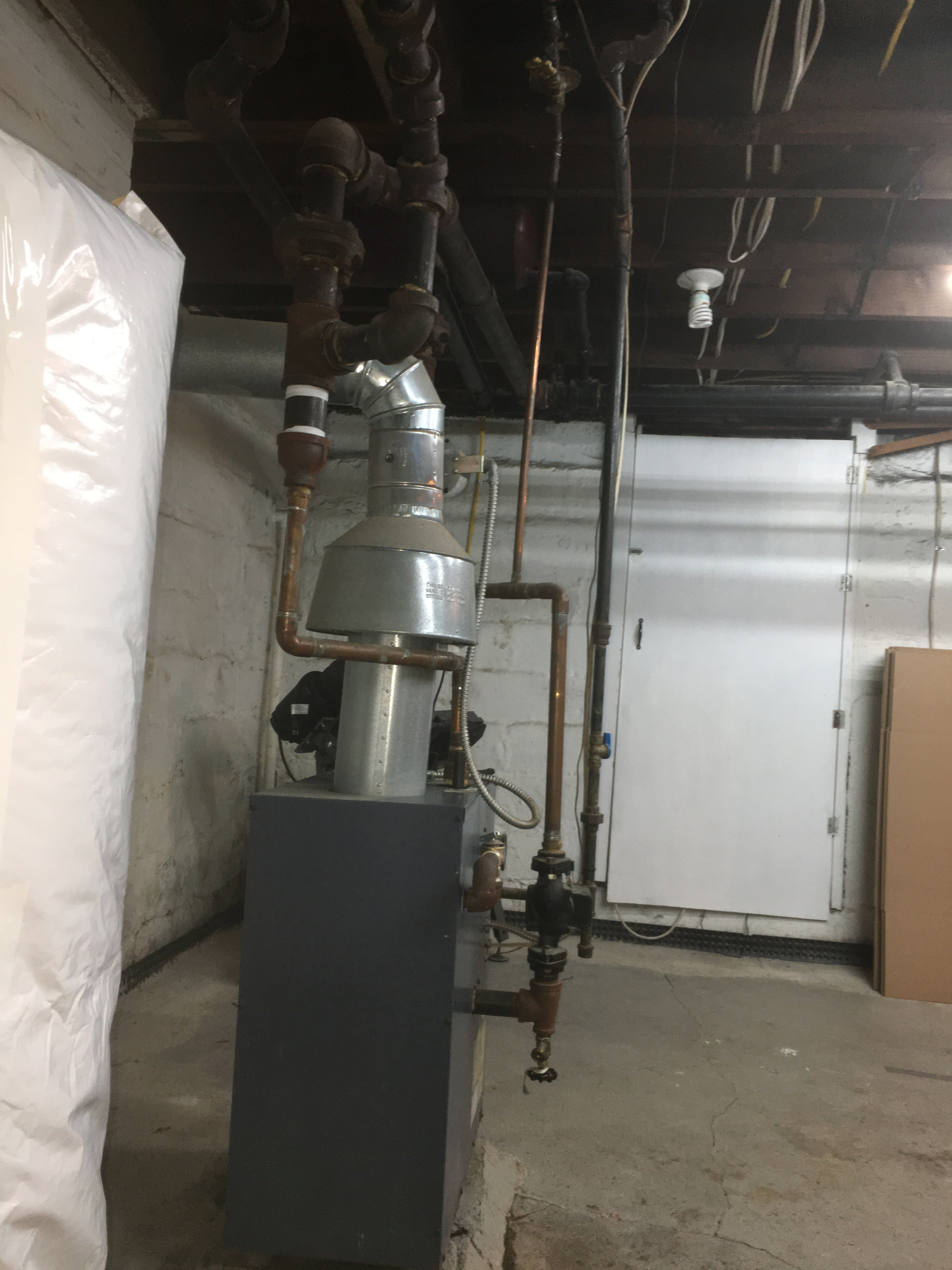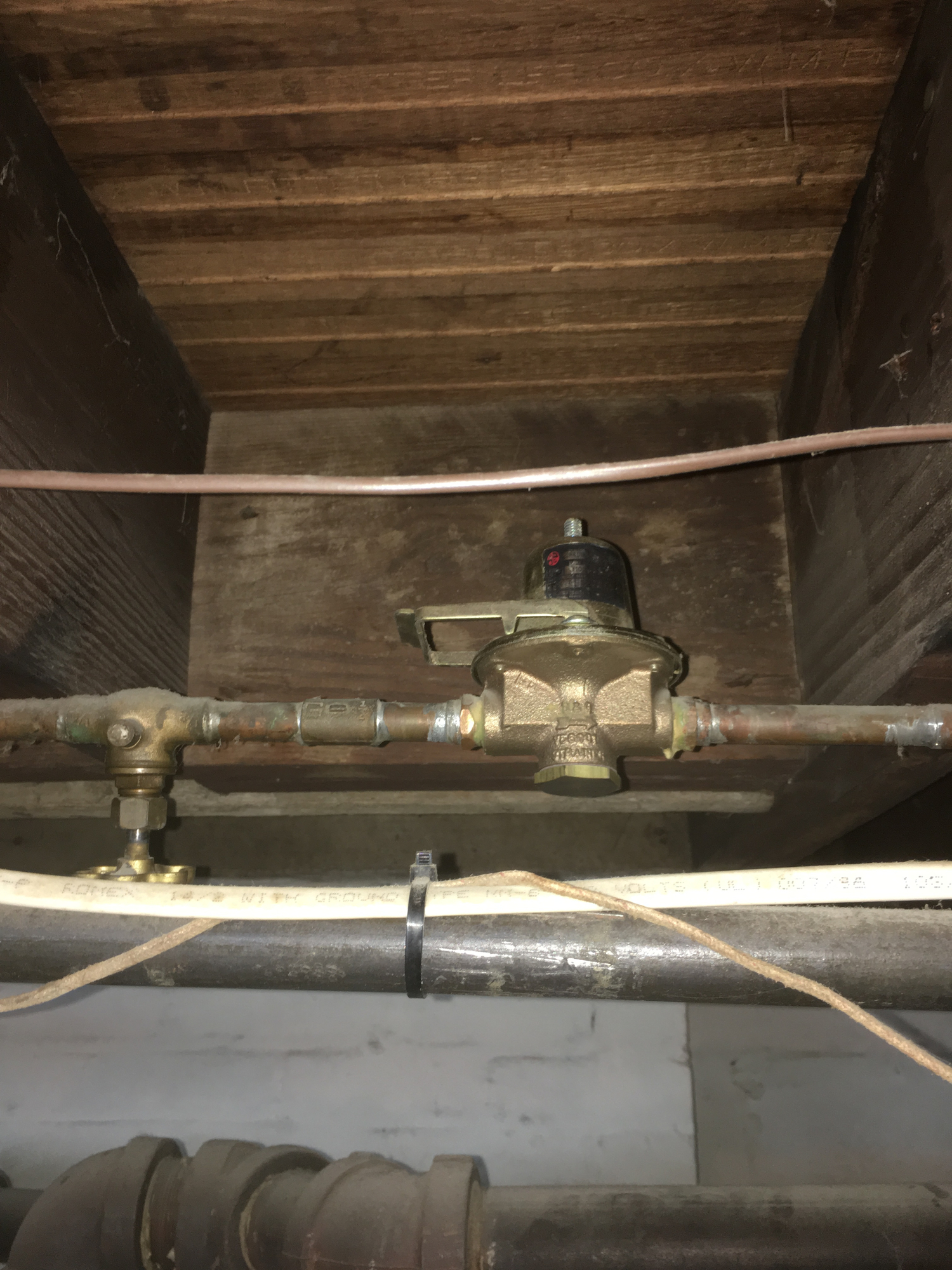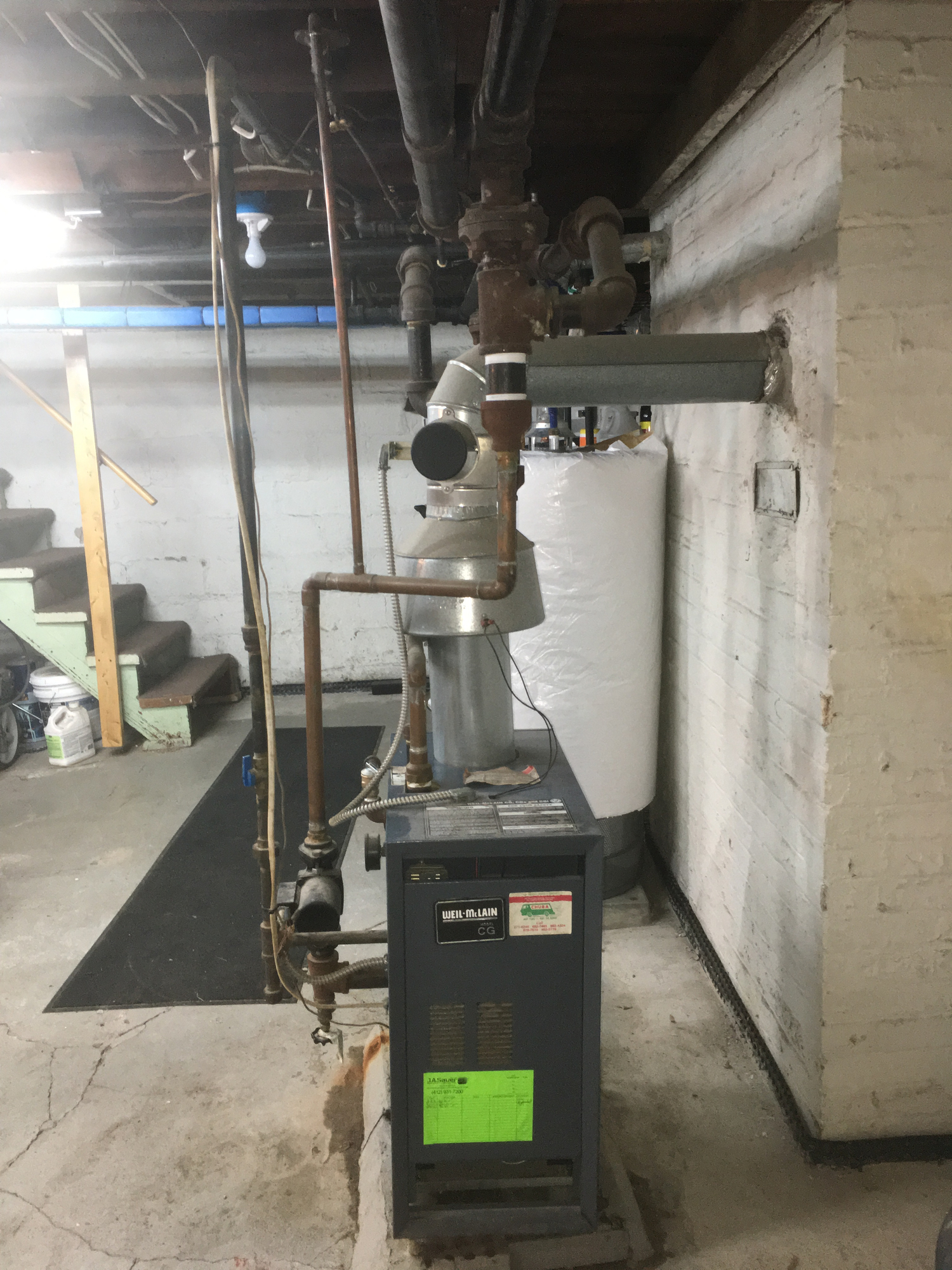Welcome! Here are the website rules, as well as some tips for using this forum.
Need to contact us? Visit https://heatinghelp.com/contact-us/.
Click here to Find a Contractor in your area.
If our community has helped you, please consider making a contribution to support this website. Thanks!
Help with old two pipe direct return system
Options
TonyDestro
Member Posts: 5
I own a 1920s house with what appears to be an old two pipe direct return system. It appears that two radiators were removed from the system (bathroom, kitchen) and the supply and return lines for those radiators capped off. There are five remaining Columbia brand radiators. The balance valves which appear to be the originals on the radiators appear to be seized up. The system seems to work very well, with only a few things to complain about. The upstairs is too hot in the morning. I can't find any type of air separator on the system anywhere. The one radiator makes a banging noise once when the system fires up. There are no unions or valves to isolate the boiler for service. The shutoff valve turns but will not close. The expansion tank is the old kind with no bladder and on the return, on the suction side of the circulator, which is also on the return.
My father was a master plumber with lots of hydronics experience, unfortunately he recently passed away due to leukemia and so cannot help me. He taught me a ton, but almost nothing about hydronics.
What changes would you make to this system if it were yours? Right now I am thinking TRVs, but I am tempted to move the circulator to the supply and install a caleffi discal on the supply and a modern expansion tank, then remove the old expansion tank. The manual for this boiler explicit shows the circulator on the return though.










My father was a master plumber with lots of hydronics experience, unfortunately he recently passed away due to leukemia and so cannot help me. He taught me a ton, but almost nothing about hydronics.
What changes would you make to this system if it were yours? Right now I am thinking TRVs, but I am tempted to move the circulator to the supply and install a caleffi discal on the supply and a modern expansion tank, then remove the old expansion tank. The manual for this boiler explicit shows the circulator on the return though.










0
Comments
-
Regarding the unbalance, the first thing I'd do is put a radiator in the kitchen.
I'd also repipe the boiler. At the moment it's getting a lot of cold return water, which can cause flue gases to condense in the chimney or the boiler itself. W-M's piping specs for this type of system are on pages 24-25 of the current manual, here:
https://www.weil-mclain.com/sites/default/files/field-file/CGi Series 3 Boiler Manual 1016 Web Version - Starting CP7531680.pdf
Regarding the expansion tank- if you add a proper air separator and pipe it to the tank via an Airtrol tank fitting, it should not waterlog. I much prefer this setup to bladder or diaphragm tanks, since these tend to fail over time. I see a lot of older plain-steel tanks, but never an older bladder/diaphragm tank.
Where are you located?All Steamed Up, Inc.
Towson, MD, USA
Steam, Vapor & Hot-Water Heating Specialists
Oil & Gas Burner Service
Consulting1 -
If you loosen the packing nuts on the radiator valves, you can often get the handle to turn.—NBC0
-
It looks like those valves may be some early version of a ball valve, maybe with the stop missing so they turn 360 degrees but have a definite on and of position.0
-
Looks piped correctly to me for a Closed type compression tank (pump on return), per the manual. But you probably should replace that and install a modern expansion tank as mentioned, and switch the pump around to supply side.
I would add a air scoop Or separator there too to make you life easier The water feed also connects there.0 -
That appears to be an old gravity system. In reality your heating way more water then needed.
0 -
If you are up for a major repipe I would do a home run system, 1/2 pex to each radiator with TRV added. it would be nice to get rid of all that steel piping

First step would be a room by room heat load calculation. confirm that radiators are adequate in each room.
No sense in adding components until you have a load calc.
https://www.slantfin.com/slantfin-heat-loss-calculator/Bob "hot rod" Rohr
trainer for Caleffi NA
Living the hydronic dream0 -
@hot_rod Wouldn't it be a good thing for him to keep the oversized piping in case of the possibility of a future mod-con replacement boiler? I could be wrong but I thought I remember hearing that condensing boilers work well with high mass.
Personally I would keep the existing boiler and do a nice home run manifold setup like you suggested.0 -
The piping mass and content would act as some buffer no doubt. But uninsulated piping, where you may not need or want the heat. A buffer with a mind of its own. I'd rather buffer in a well insulated tank if a buffer is actually needed after a rebuild.
A load calc, properly size a modulating boiler to the load running the lowest SWT. With the smallest boiler, turndown, ramp delay, heat derate feature, ODR , etc that is about as good as it gets nowadays. Light years ahead of what is going on now.
And always the load calc is the only road map to a successful system.Bob "hot rod" Rohr
trainer for Caleffi NA
Living the hydronic dream0 -
All of your comments have been extremely helpful.
I'm worried if I loosen the packing I will have to replace the packing. I'll just get those materials. It might be easier to just replace the packing instead of spud wrench and replace?
Some comments: The piping is the only thing keeping the basement remotely heated. I'm not sure the home run system would be all that much work, really. I have pex tools. Except for lugging all that old pipe out.
My dad told me it was possible to add a rads in the basement (there is a bathroom on this level that is again only poorly heated by the large piping) He also said I could add a radiator in the garage (which sits lower than the basement, is about 10 feet from the house, and under ground. He said to use his Hydro Drill and bore a hole through the wall directly into the garage or to contact a plumber who owns a directional drill.
I'm going to do my homework on the heat load calc.0
Categories
- All Categories
- 87.4K THE MAIN WALL
- 3.3K A-C, Heat Pumps & Refrigeration
- 61 Biomass
- 430 Carbon Monoxide Awareness
- 120 Chimneys & Flues
- 2.1K Domestic Hot Water
- 5.8K Gas Heating
- 115 Geothermal
- 168 Indoor-Air Quality
- 3.7K Oil Heating
- 77 Pipe Deterioration
- 1K Plumbing
- 6.5K Radiant Heating
- 395 Solar
- 15.7K Strictly Steam
- 3.4K Thermostats and Controls
- 56 Water Quality
- 51 Industry Classes
- 50 Job Opportunities
- 18 Recall Announcements


